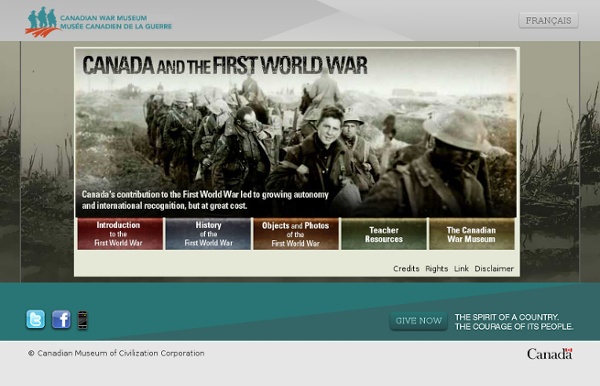



Europeana Collections 1914-1918 - Untold Stories of the First World War Photos, letters and other memorabilia It was the war that tore Europe apart – a struggle between the central powers of Germany, Austria-Hungary, Turkey and Bulgaria, against the allied powers of Britain, France, Belgium, Russia, Italy and the USA. No European nation was left untouched – even neutral states felt the impact of the war. But it was the ordinary men and women who were affected the most. This exhibition gives those personal accounts from across Europe for the first time, based on stories and items contributed by the public. Renowned historian and WW1 author Peter Englund said: “This important and imaginative project tells the other side of the story, from the point of view of a young soldier who signed up seeking adventure, to the family devastated by news that he was one of millions who would never return.
First World War 1914–18 Australian troops in the Turkish Lone Pine trenchesA02022 The First World War began when Britain and Germany went to war in August 1914, and Prime Minister Andrew Fisher's government pledged full support for Britain. The outbreak of war was greeted in Australia, as in many other places, with great enthusiasm. Australia's early involvement in the Great War included the Australian Naval and Military Expeditionary Force landing at Rabaul on 11 September 1914 and taking possession of German New Guinea at Toma on 17 September 1914 and the neighbouring islands of the Bismarck Archipelago in October 1914. On 25 April 1915 members of the Australian Imperial Force (AIF) landed at Gallipoli together with troops from New Zealand, Britain, and France. Throughout 1916 and 1917 losses on the Western Front were heavy and gains were small. The Middle East campaign began in 1916 with Australian troops participating in the defence of the Suez Canal and the allied reconquest of the Sinai peninsula. C.E.W.
Digitised Manuscripts Almost 900 Greek manuscripts and some of the most important papyri, ranging in date from the first to the 18th centuries, are now included in the Digitised Manuscripts site. The first two phases of the Greek Manuscripts Digitisation Project were generously funded by the Stavros Niarchos Foundation and the third phase was funded by the Stavros Niarchos Foundation, the A. G. Leventis Foundation, Sam Fogg, the Sylvia Ioannou Foundation, the Thriplow Charitable Trust, and the Friends of the British Library. A guide to the Greek Manuscripts collections, including articles, videos and collection highlights, is available here. Over fifty Thai manuscripts and the Chakrabongse Archive of Royal Letters have been digitised with the generous support of the Royal Thai Government, in celebration of the occasion of the eightieth birthday anniversary of His Majesty King Bhumibol Adulyadej of Thailand on 5 December 2007.
Operation War Diary World War 1 Sanctuary - Our galleries - Auckland War Memorial Museum The top floor of the Museum is dedicated to the memory of fallen soldiers and is known as both the World War 1 Sanctuary and the World War 2 Hall of Memories. New Zealand sent more men to fight in the First World War, per head of population, than any other nation. 18,166 New Zealanders died from a country of only one million. The grieving was made harder for New Zealand families because nearly all those killed were buried overseas. 5,325 New Zealand soldiers almost a third of all those killed - have no known grave. Families therefore had nowhere to focus their grief and say goodbye to their loved ones. For this reason, a large number of war memorials were built around New Zealand, which acted as symbolic graveyards for grieving families. The spectacular stained glass lead light ceiling directly above the entrance foyer shows the Coat of Arms of all British Dominions and Colonies during the First World War. The Roll of Honour is also kept in book form in the World War 1 Sanctuary.
Bienvenue à la Bibliothèque nationale et universitaire de Strasbourg Lives of the First World War - Home page National World War I Museum at Liberty Memorial Historial de la Grande Guerre The Great War Archive Happy Valentine's Day My Angel last night I received a letter from you. I learned how strong was the pain on the day we had to separate. This moving love letter was sent by Sergeant Major Giuseppe Castellani, to his wife Antonia at home in Fossato di Vico, while he was away serving in the Italian army during the First World War. Images: "Memory of our glorious Alps" sent 19 September 1917, and reverse View the full story and the images here. Words by Alun Edwards and Monica Rossi, University of Oxford